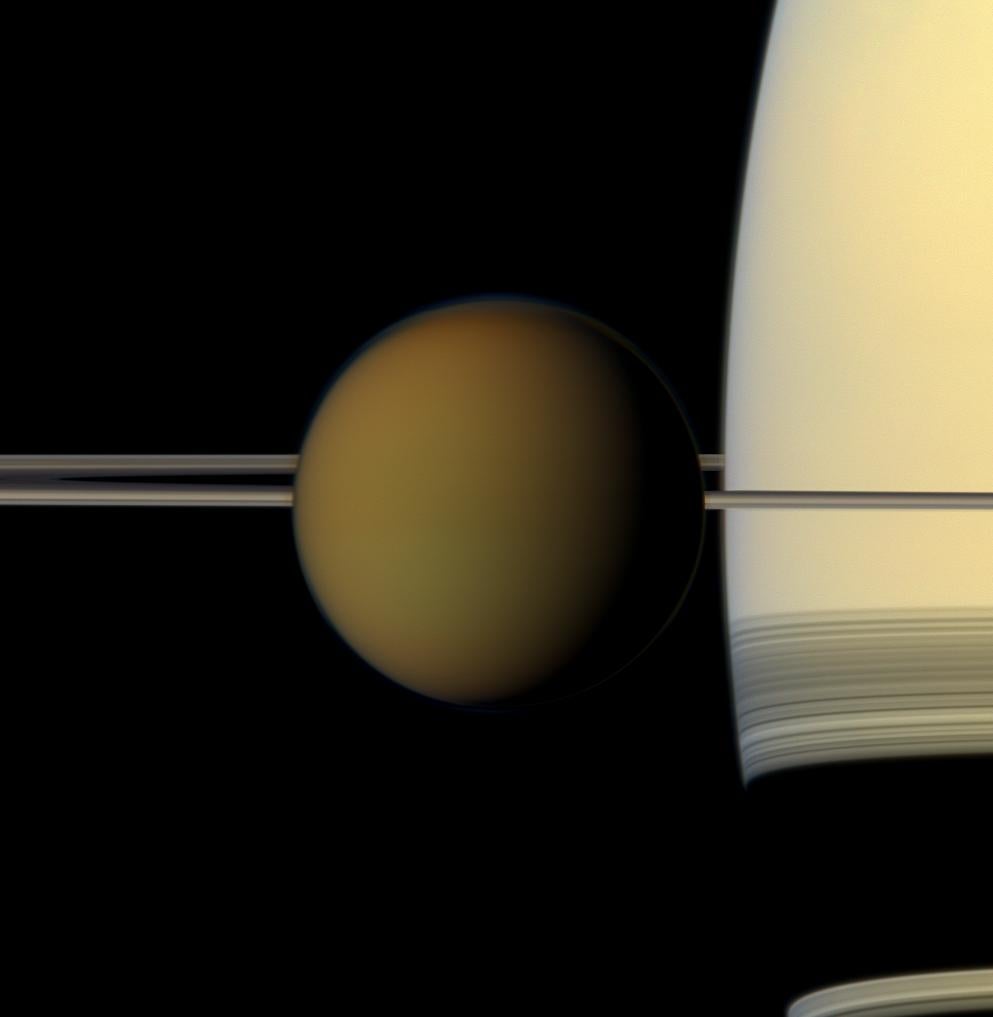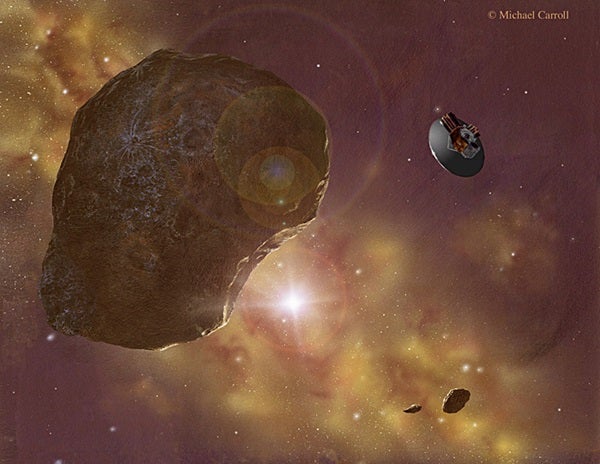A committee of top scientists, engineers, and policy-makers met in Boulder, Colorado, in June to pound out ideas for future space missions. NASA tasked the assembly, called the Outer Planets Advisory Group (OPAG), with suggesting strategies for exploring the outer solar system, including asteroids, comets, and the Kuiper Belt. Given budgetary and time constraints, it was no easy task. Still, the working committee devised many clever missions for future exploration. Here are a few under consideration:
Beachfront property — Researchers long have suspected Jupiter’s fourth-largest moon, Europa, hides a deep water ocean under its frozen surface. One proposal for future exploration includes a sophisticated nuclear-powered orbiter with sounding radar to peer beneath the ice crust. Nuclear power is necessary because this type of radar requires lots of energy to “see” through the crust to the conjectured ocean floor. Scientists also suggested including a Europa lander, perhaps sent to an area where fresh ice has upwelled from below.
Return to a sludge moon — With the remarkable results of NASA’s Cassini spacecraft and the European Space Agency’s Huygens probe, scientists are scrambling to find ways to study Saturn’s planet-size moon Titan in more detail. One concept deploys a blimp to cruise over the surface, carrying out aerial mapping and dropping telemetry packages. With Titan’s primordial-Earth chemistry, this moon is deemed a prime target in our search to understand life’s beginnings.
Visit to an ice giant — Uranus and Neptune are fundamentally different from their gas-giant cousins, Jupiter and Saturn. With the successful Galileo (Jupiter) and Cassini (Saturn) reconnaissance missions, many researchers feel it is time to explore the ice giants. Neptune is a more enticing target because the large moon Triton orbits it. Triton hosts eruptions of super-chilled nitrogen in a phenomenon called cryovolcanism. Some OPAG members proposed a Triton lander along with a Neptune orbiter. Another suggestion proposed a Neptune atmospheric probe. According to planetary-atmosphere expert Andrew Ingersol of the California Institute of Technology, “We would use Triton as a travel engine,” helping the orbiter move to new explorations using Triton’s gravity. Scientists envision 40 close flybys of Triton.
Fran Bagenal, committee chair, told Astronomy that “the high point of the meeting was a recognition that Europa is the top-priority target and that we have support from HQ [NASA] to make it happen.”
Decisions on whether to fund Europa and other explorers will come years or decades from now. But if OPAG’s recommendations are any indicator, NASA’s future will be ambitious and inspiring.











